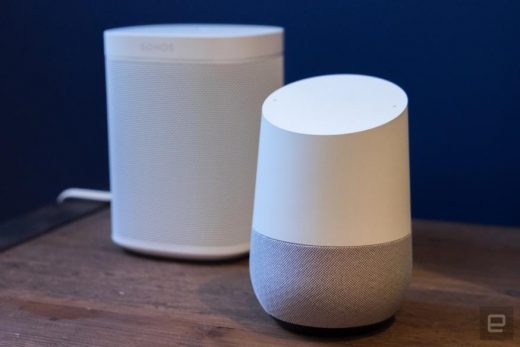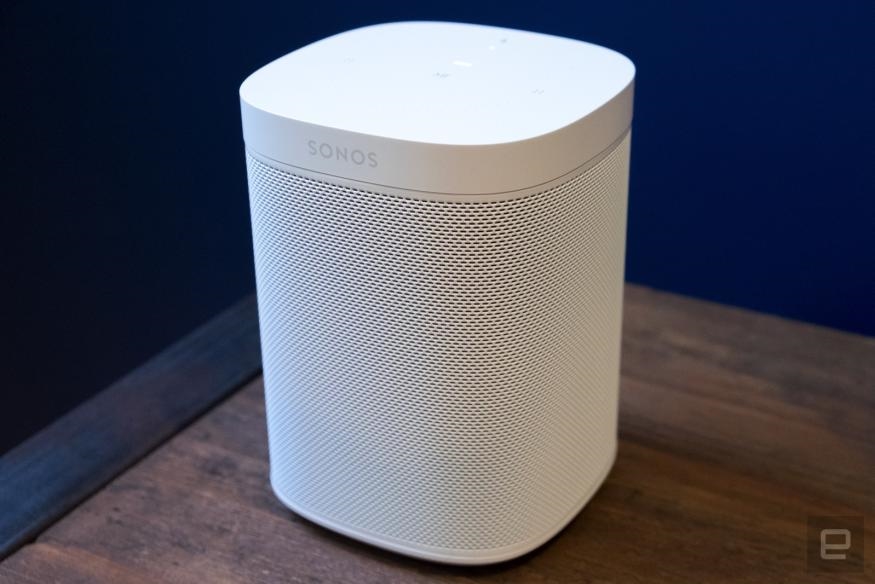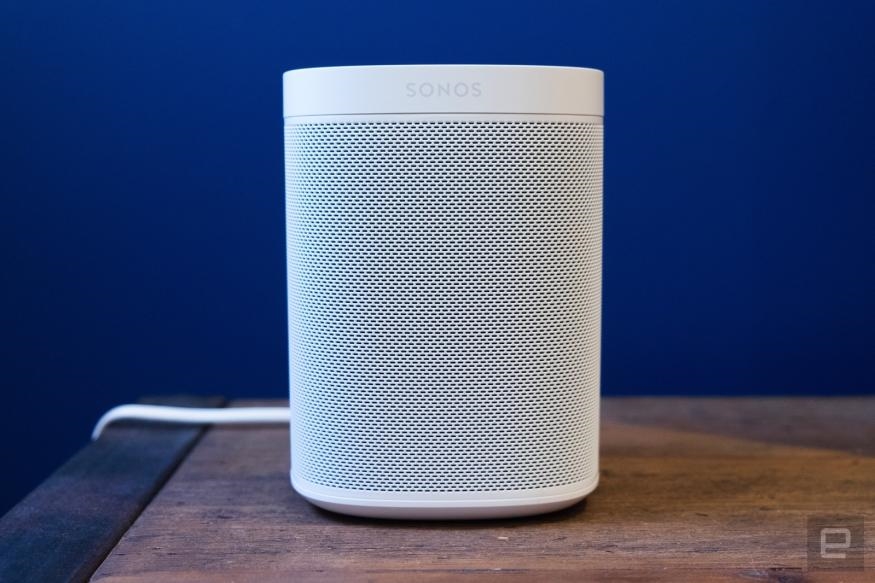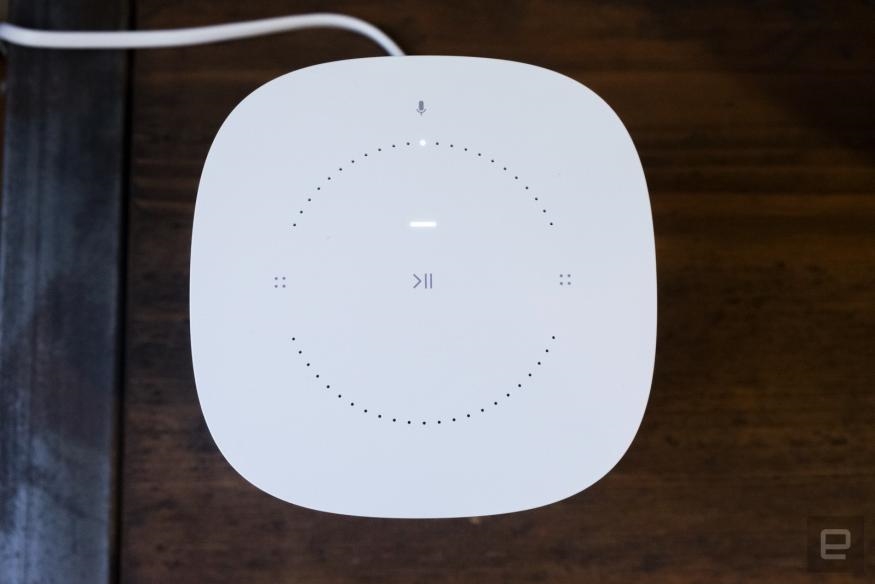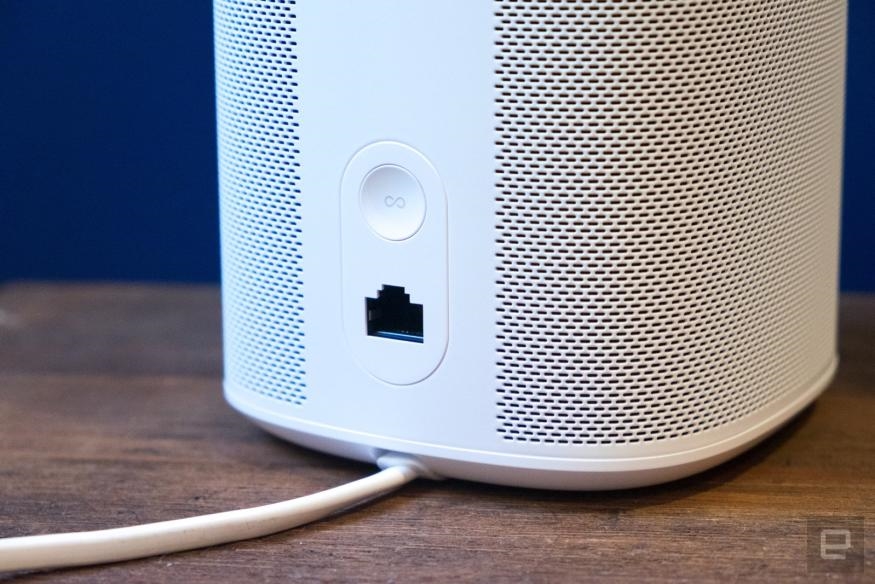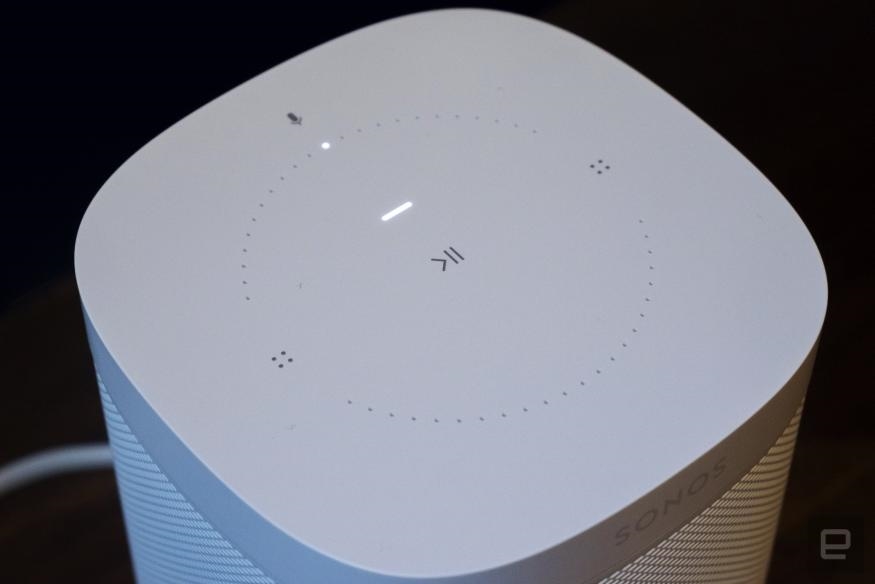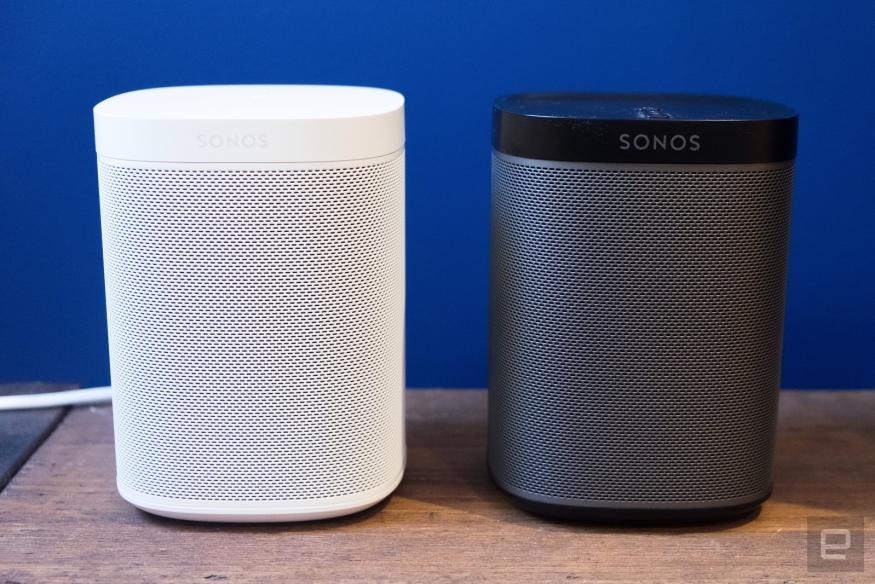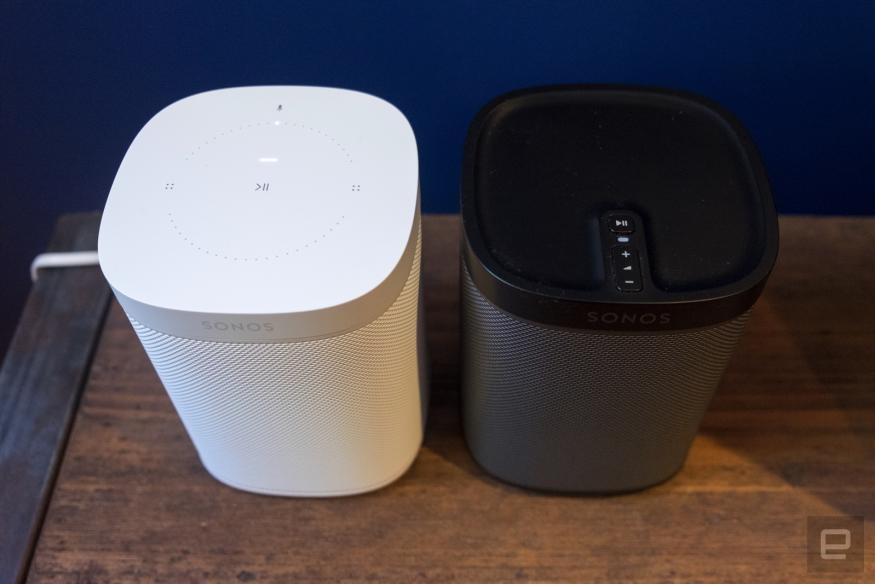The best smart home gadgets for 2023

When Sonos released the Play:5 speaker in late 2015, the Amazon Echo was still an unproven tech curiosity. But since then, Alexa and the Echo have grown rapidly in both popularity and functionality, inspiring competition from the likes of Google and Apple. Talking to a speaker is totally normal now — but Sonos users haven’t been able to do that. They’ve instead had to choose between the convenience of products like the Echo and Google Home and the superior audio quality that Sonos speakers offer.
Sonos has known for some time that this is a problem. In early 2016, then-CEO John MacFarlane cited the Echo as primary competition and promised that voice recognition would be a key technology for the company moving forward. Now we’re finally seeing the fruits of that effort. The Sonos One takes everything that worked in the company’s entry-level Play:1 speaker and adds in support for Amazon’s Alexa, which means you can finally talk to a Sonos speaker and have it play music for you. But with Google, Amazon and Apple all working on music-focused speakers of their own, Sonos could get buried if the One doesn’t do everything right.
Sonos One
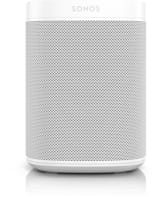
Pros
- Excellent audio quality for the price
- First Sonos to let you control your music with your voice
- Attractive, inconspicuous design
- Works with just about every music service you can use
- Alexa integrations works almost exactly the same here as on the Echo
- Connects to all other Sonos speakers for multi-room audio
- Will get Google Assistant and AirPlay 2 updates next year
Cons
- Voice commands only have full functionality with a few music services
- Spotify voice commands not available at launch (but coming later this year)
- Voice commands are sometimes a little buggy.
- Setup process is a bit complicated
Gallery: Sonos One
Hardware
If you’ve used the $199 Play:1 speaker, you’ll feel right at home with the Sonos One. At a glance, it features the same rounded rectangular shape as the Play:1 but adds a few new design flourishes to match Sonos’ current design language. The top of the One is completely flat now, with no physical buttons like the ones on the Play:1. Instead, the One’s top surface doubles as a touch panel, with a play/pause button dead center. On either side are spots to tap to raise and lower volume, and sliding your finger left to right lets you skip to the next track. This setup is identical to what Sonos introduced on the Play:5 and carried over into the recently released PlayBase; I’m glad to see it here as well.
There are two LED lights on top of the speaker. One is a status light to show you when the device is working or having trouble connecting to the internet; the second is underneath a little microphone icon. As you’d expect, this shows you whether the six-microphone array in the One is active. Tap the mic icon to keep the speaker from listening in and the light goes out.
Other than updates to the top of the speaker, the only external difference between the One and the Play:1 is that the grille is now color-matched to the rest of the speaker, which comes in black or white. The Play:1’s grille is gray, regardless of what color the rest of the exterior is.
The Sonos One uses the same audio components and speakers as those found in the Play:1, but the internal layout had to be completely redesigned in order to fit the microphones. But Sonos was able to make the necessary changes without affecting the size or weight of the One — these specs remain unchanged from the Play:1.
Setup
Once you plug in the Sonos One, all of the setup is done on your smartphone. If you’ve never set up Sonos products before, you’ll need to create a Sonos account; from there you just need to connect the speaker to your WiFi network. You’ll then want to sign in to the music services you use — Sonos supports essentially every available option: Spotify, Apple Music, Google Play Music, Pandora, Tidal, Amazon Music and many more.
The next part of the setup process is entirely new: enabling Alexa. You’ll need to have the Alexa app installed on your smartphone — the Sonos app will direct you there, at which point your new speaker will show up as ready to be configured. It’s a pretty simple process, but you’ll then have to enable your music services in Amazon’s app as well.
That’s where I encountered a hiccup. The speaker works only with music services supported by Amazon and Alexa, which currently include only Amazon Music (naturally), Pandora, iHeartRadio and TuneIn. Even though Spotify works with other Alexa-enabled devices, it doesn’t yet work on the One, though Sonos says it’ll be ready soon. Other music services that aren’t supported by Alexa will work with the One through the app, and you’ll still be able to use voice commands to pause, resume and skip tracks. But you won’t be able to ask Alexa to play specific albums or playlists from your Play Music or Tidal account, at least for now.
One last word on setting up voice services. Over the years, Sonos has committed to supporting every audio service that it could, and it wants to do the same with voice control systems. As such, the Google Assistant will come to the Sonos One sometime early next year. So if you prefer Google’s voice assistant, know that it should be available before too long. In particular, those using Google Play Music or YouTube Music will want to give this a shot.
Audio quality
Since the Sonos One has the same audio hardware as the Play:1, sound quality was essentially indistinguishable between the two, and that’s a good thing. The Sonos One impressed me with clear, dynamic and loud sound that far outstrips Google Home or the original Echo. (The second-generation Echo, announced three weeks ago, is supposed to have better audio.) Of course, you’re paying a bit more for the One, but $199 is a totally reasonable price for the sound quality you get here. The One lacks the bass performance, stereo separation and improved clarity you’ll get from a larger, more expensive speaker like Sonos’ own Play:5 or the forthcoming Google Home Max, but the price-to-performance ratio here is excellent.
As with the rest of the Sonos lineup, you can tune these speakers using a feature called “TruePlay.” It uses the mic on your iPhone to analyze your room and optimizes the sound of the speaker based on where it has been placed. I’ve been impressed with TruePlay since it was unveiled two years ago, but it’s worth noting that Google and Apple are both releasing speakers that can tune themselves anytime you move them. Since no Sonos speaker (until the One) has had working mics, this hasn’t been possible, and the One still uses the same tuning process as the rest of the Sonos lineup.
The downsides to the One mostly come down to bass, as I mentioned earlier. There’s only so much you can get out of such a compact speaker. The audio still sounds balanced — I didn’t feel like the music was lacking when listening to the One on its own — but the low end is not as strong as what you’ll get from larger (and more expensive) speakers.
The One is also a mono speaker, but you can pair two of them together to get stereo sound as well as increased volume. I’ve tried this before, with a pair of Play:1 speakers, and it makes a significant difference in the listening experience. One speaker is just fine for background music, but people serious about audio quality will appreciate having a stereo pair.
Unfortunately, it’s not possible to pair a Sonos One and a Play:1 together in stereo, despite the fact that they’re essentially the same speaker. Sonos said that most customers pair speakers together when they buy them in a pair, but there are probably people who’ve bought one Play:1, to try Sonos out, who’d be interested in adding a One for voice control and stereo playback. The company did at least say that this feature could be added in the future via a software update.
Otherwise, the One works with the rest of the Sonos lineup just as well as you’d expect. If you have other Sonos speakers and want to group the One with them for multi-room playback, you can do that right in the Sonos app.
Alexa integration
But if you’re buying the Sonos One, you don’t want to use the music player app — you want to control it with your voice. Assuming you’re using a service that works with Alexa, this functions basically the same way it does on an Echo. This means that you can ask your One to start play any song, album, artist, playlist or anything else in your music library. The Alexa app also lets you pick different services for your “music library” and “stations,” if you’re so inclined. That lets you access playlists and albums from one service but have another play genre-based stations (what Pandora has focused on for so many years).
Once you’ve started playing some tunes, you can ask Alexa to raise and lower the volume, skip tracks or pause your music entirely. You can also send music to other Sonos speakers in your setup using Alexa. You can tell Alexa to play music on other speakers using the names that you’ve assigned them in the Sonos app (living room, office, etc.). Overall, music control with voice works just fine, whether using a music session you kicked off with your voice or something you started in the Sonos app. If you’ve used Alexa on one of Amazon’s own devices before, you’ll mostly be right at home with the Sonos One voice commands.
Unfortunately, there were a few times I ran into some strange and frustrating bugs — the speaker wasn’t recognizing that it was playing music, so “pause” or “next track” requests didn’t work. Amazon Music also occasionally got confused and told me it was playing on another device so it couldn’t play on the speaker I asked for. Sonos helped me troubleshoot the problem — just asking Alexa to “discover devices” cleared things up. It seemed to re-sync the Sonos Alexa skill with the speaker, essentially, and then I was happily playing tunes again.
I also occasionally had trouble getting the One to hear my cries of “Alexa” when I wanted its attention. That was only when I had music playing pretty loudly, and I’m pretty sure that was the cause of my problem. It’s not a deal-breaker, but it’s probably worth noting that you might have a hard time getting Alexa’s attention if you’re cranking some tunes.
Alexa integration means the One can also do almost anything that Echo devices can do. You can install skills for managing smart home devices, sync your calendar and reminders to Alexa, get weather forecasts and news updates, ask random trivia questions and add the many third-party skills that Amazon’s service supports.
There are a couple of notable Alexa services that aren’t enabled when using the Sonos One: voice calls and messaging. Those features are saved for Amazon’s own hardware at the moment. Sonos said that those features could be added in the future, but the company wanted to focus the experience more on music than on the full suite of Alexa features — a reasonable claim, but the One can do nearly everything else that Alexa can do, so it feels more like this is something Amazon wanted to save for itself. This one feature aside, though, the Sonos One is a strong option for getting an excellent music speaker that also taps into nearly everything that Alexa can do.
The competition
Sonos products have historically been pretty unique, but as we’ve mentioned, the past year has seen some major players get into the music speaker market. With Alexa on board, the new Echo and Echo Plus are the Sonos One’s most direct competitors. We haven’t fully reviewed either, but I’d be surprised if either offered audio quality that’s on par with the One. But at only $99, the standard Echo will offer an improved speaker as compared with its predecessor. Plenty of people were already listening to music on the Echo, and now new buyers will end up with an even better speaker. For lots of people, the Echo speaker will be good enough.
The Echo Plus is slightly bigger than the standard Echo, and as such, it has a bigger tweeter. That said, improved audio over the standard Echo isn’t a selling point Amazon has mentioned, so it’s safe to assume it’ll provide a similar listening experience. We can’t say for sure yet, but we’ll be reviewing both of them soon.
Apple and Google are both launching their own music-focused, voice-controlled speakers this winter: the HomePod and Home Max, respectively. Based on the various demos we’ve had, both seem like they’ll outperform the Sonos One from an audio standpoint. But that’s to be expected — Google’s Home Max will cost twice as much ($399), and Apple’s HomePod will come in just under that at $350. And in both cases, you won’t have access to Alexa; you’ll have to be content with the Google Assistant or Siri as your digital assistant.
If you’re thinking of spending that much money on a speaker but would prefer the Sonos ecosystem, you might as well consider the $499 Sonos Play:5. No, it doesn’t have voice control built in, but you can pair it with an Echo Dot and get the same level of voice control that the Sonos One offers, with audio quality that far surpasses any other connected speaker you could buy.
None of these options match the Sonos One’s $199 price point; the speaker really does sit alone in this category. It’s better than an Echo or Google Home, but probably not as good as what Google and Apple have coming up. But if you have even a passing interest in playing music around your house, the Sonos One hits a sweet spot, offering great music quality without breaking the bank.
Wrap-up
The Play:1 has been Sonos’ best-selling speaker, and with good reason. It offers significantly better music quality than your average Bluetooth or smart speaker, at a reasonable price. It’s also a great first step into a multi-speaker setup for your home. The Sonos One does all of that and adds voice controls without raising the price. Those voice controls may have a few bugs to work out, but aside from one frustrating afternoon, it worked well for me.
Anyone who is considering an Echo or Google Home would do well to consider the Sonos One as well. In a world where white earbuds, laptop speakers and Bluetooth devices have come to dominate the music-listening experience, a lot of people have forgotten how good a dedicated music speaker can sound.
The Sonos One is a great way for most people to significantly upgrade their audio setup while also getting the convenience of voice controls. I wish that both Spotify voice commands and the Google Assistant were supported at launch, but this speaker will keep getting more features through upcoming software updates. Given that, I have no problem recommending it now. It’ll work right out of the box as an Alexa-enabled device, it’ll support more music services over time and it’s a great way to dip your feet into the Sonos ecosystem. Just don’t be surprised if you end up wanting to buy a few more.
(12)

